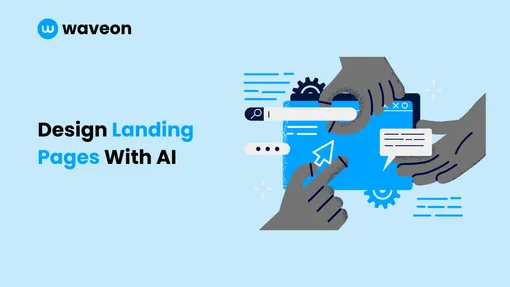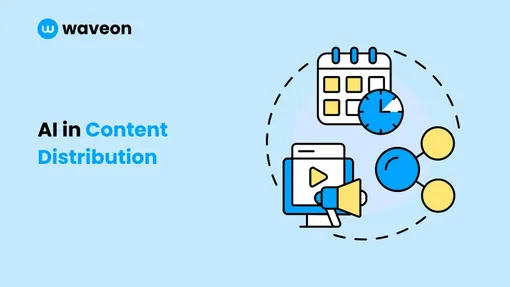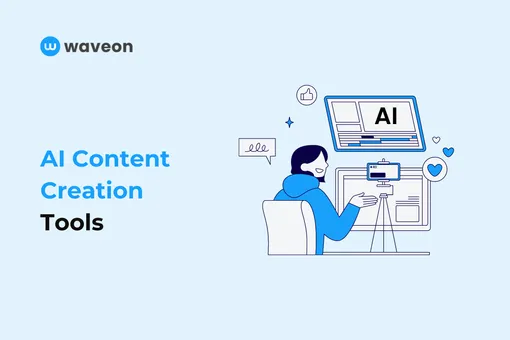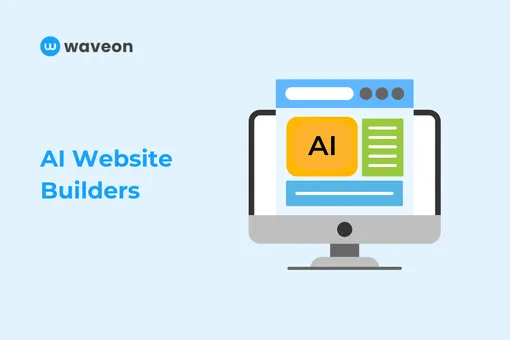Marketing
7 Reasons Why Your B2B Business Needs a Newsletter in 2024 (With Examples)
Ekta Swarnkar
11/3/2023
0 min read
TABLE OF CONTENTS

-
“Newsletters are B2B marketer’s secret weapon.”
-
“Email marketing gets you the best results of all marketing strategies.”
-
“You can’t expect to close a B2B deal without email marketing.”
In one way or another, you must have heard of these many times in your business journey so far, which made you look for reasons why newsletters are so important in B2B.
If so, you’ve come to the right place — this post will list why you should start a newsletter for your business, including examples of successful newsletters for inspiration.
Let’s begin.
What is a newsletter?
A newsletter is a communication method businesses use to share information about business with their customers, prospects, and subscribers. These newsletters contain product updates, new stories, helpful content, or anything to keep subscribers interested in a brand.
For example, twice every month, Moz sends the top 10 best SEO articles to its email subscribers to keep them updated on the latest SEO.

You might not know, but you’ve also subscribed to several newsletters. Check your inbox and find the contacts that send you emails regularly — those are newsletters.
What’s the purpose of a newsletter?
In B2B, building relationships with target customers is the key to closing deals. Not only is the closing price generally higher, but also the sales cycle takes longer. In any B2B deal, you have to maintain an expert, helpful, and best-in-market relationship with the prospect.
So, how can you build these relationships with your prospects without appearing pushy?
Newsletters.
By reading your newsletters, your subscribers can:
-
Learn about the company
-
Understand the brand’s mission and values
-
Learn about the products and services
-
Realize what’s their pain point and how your solution solves it
-
Figure out if your company is a fit
By appearing in their inboxes as “newsletters,” you nurture your relationship with them and position yourself as an expert. Newsletters play a big role in turning strangers into brand lovers.
But that’s not all — I promised you concrete reasons why newsletters are essential, so here goes.
7 reasons why your B2B business needs a newsletter
Let’s start with numbers:
1. Email marketing brings $36 ROI for every $1 spent
According to a Litmus report, you get $36 ROI (return on investment) for every $1 spent. Email marketing produces the best results than PPC and SEO combined:
-
PPC returns $2 for every $1.
-
SEO returns $22 for every $1.
No wonder your marketing strategy leaks customers if you’re not using email marketing.
Take Spotify, for example. The company launched in 2008 and has more than 320 million active daily users, with yearly revenue of $13.6 billion — a big part of its massive audience base is because of using email marketing effectively.
Let’s look at the Spotify email marketing strategy. First, Spotify gives a free 3-month premium trial, and when users fill out the signup form, the final step includes permission to send marketing messages.
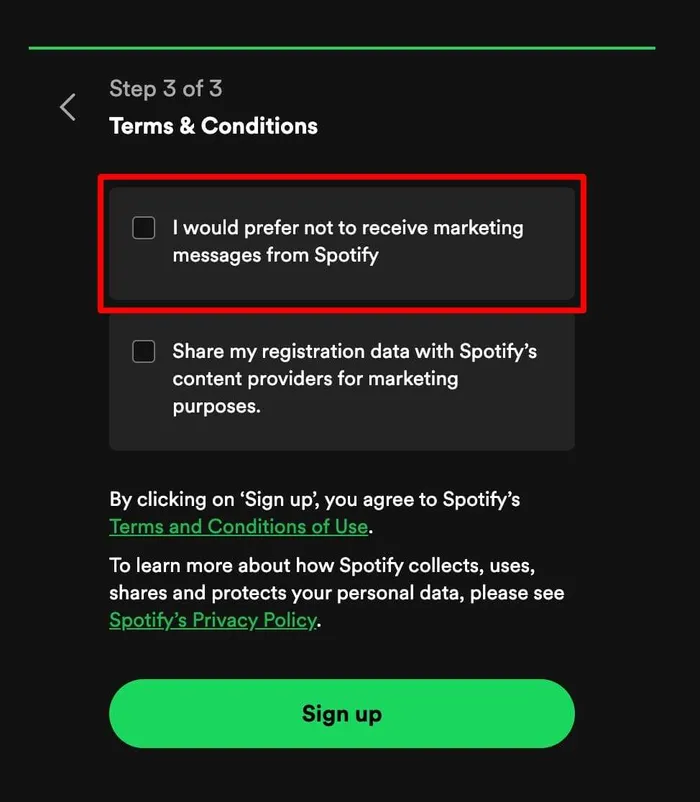
After signing up, users regularly receive marketing emails from Spotify about song recommendations, product updates, new launches, etc. These newsletters prompt users to use the platform more by listening to more songs and help Spotify increase revenue.
2. Get your prospects’ undivided attention
If you’re wondering why email has such an impressive ROI compared to other marketing channels, it’s because it is more personalized and private.
People are easily distracted on social media, but when reading emails, they have your undivided attention. Newsletters present as an ideal solution in B2B, where competitors are always trying to win your customers.
By getting their attention, you build brand awareness, stay on top of your prospect’s mind, and control every aspect of their buying journey.
Such as the “Learning with Semrush” newsletter — I remember signing up for a free Semrush account. But after reading its weekly product tutorials, I learned to perform many SEO activities using Semrush, so I naturally subscribed to its Guru plan.
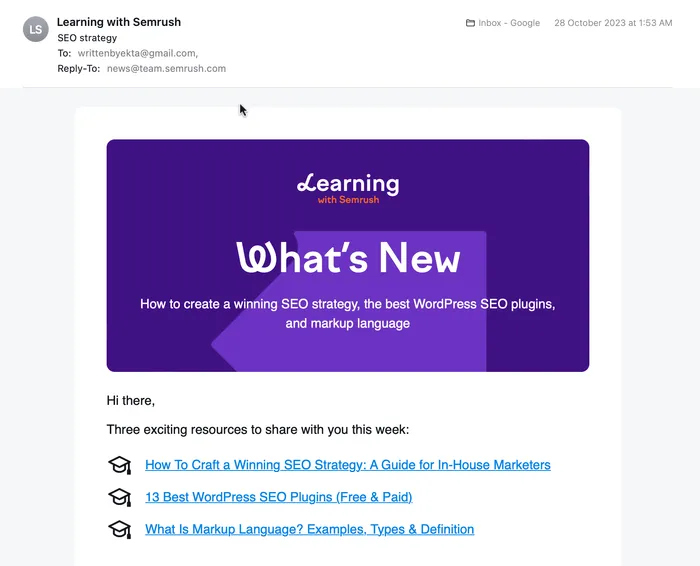
3. Educate customers about product features
One thing companies are always trying to achieve is product-market fit. And for that, they’re constantly improving their products or adding new features. But end-users won’t automatically learn about new launches — they must be informed!
Newsletters about new feature launches and product tutorials are perfect for making these announcements. You can include video/GIF tutorials to show how to use the recent launch.
For product-specific information, the Semrush team sends another newsletter to educate customers about why a feature is essential and how to use it.

4. Turn your business from a funnel to a flywheel
For many years, businesses used the funnel concept to model their customer journey without realizing it wasn’t efficient until HubSpot conceptualized the Flywheel model.

Basically, the funnel made customers an afterthought when they should be the focus. The flywheel model focuses on providing an amazing customer experience so they stay with you longer and also refer you to their friends.
Newsletters are important in providing excellent customer experience — from onboarding to educating to support. Plus, the prospects who didn’t convert but are still on your email list will keep receiving these nurturing emails and may convert in the future.
5. Encourage your customers to use your product
Customers often limit their product usage for many reasons — they found another product, they’re busy, and they don’t know how to use a specific feature.
No matter their reason, you must not let them stop using your product; otherwise, they’ll forget about your brand. Newsletters can be effective in re-engaging customers. By sending them feature-specific newsletters, you can prompt them to try it out.
I love Taco from Trello emails about feature tutorials. Each email educates about the feature, including why it’s important and how to use it, then prompts users to try it on their dashboard:
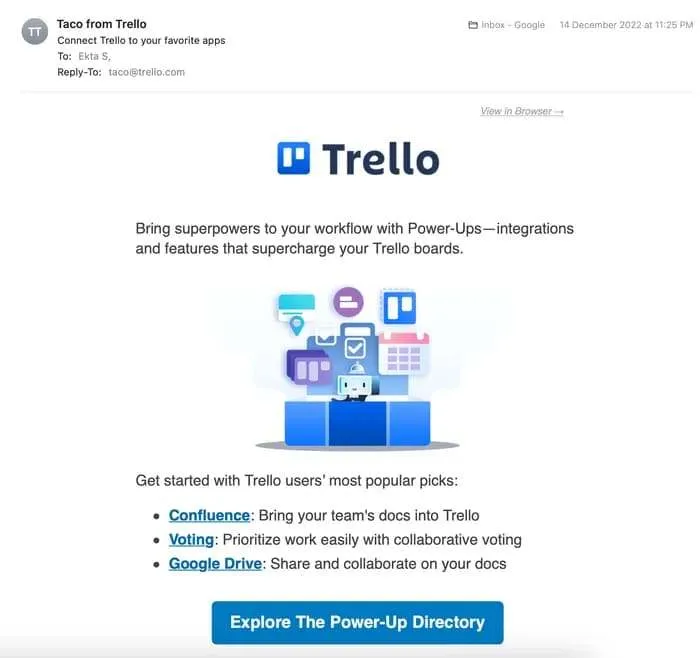
Semrush also does a great job of inviting customers to try a feature:

But the best of all is the Grammarly Streaks newsletter. Every week, Grammarly sends you the word you checked using Grammarly and other details — so you’re prompted to check more words with Grammarly and increase your streak!

6. Collect feedback from subscribers
Email marketing is the closest you can get to a customer (if you’re considering 1-1 live conversations, these are difficult to scale,) so why not use it for full benefit? Why not use newsletters to get feedback from your subscribers?
-
You can use A/B split testing for subject lines and content to identify the tone that speaks with your customers.
-
You can identify your first few customers to try out your product demos.
-
You can send survey forms to ask them for feedback on anything you’re testing.
7. You own your email list
Social media and SEO are great for attracting and engaging new customers, but the only problem is that you don’t own your audience on these third-party platforms.
Imagine you have 50k/month organic visits on your website, but a sudden Google algorithm update and all the traffic is gone. You tried everything, but nothing seems to work to pick up the tanking traffic.
That’s why having an email list and sending newsletters is your backup plan — such that when you’ve lost everything, you’ll still have your audience collected in one place.
How to use a newsletter to drive business goals?
No doubt, you need a newsletter to build a better relationship with your customers and drive more sales. But when every other business out there has a newsletter, how do you ensure yours is different?
You do that by defining the purpose of the newsletter. Think about how you can make it valuable, engaging, and unique.
Take Really Good Emails as an example. Every newsletter is focused on providing email marketing strategies to help subscribers get better. Plus, they have a massive library of best-performing newsletters for inspiration — that’s a valuable newsletter and something competitors can’t replicate.
So, don’t start a newsletter just because everyone else has one — ideate and figure out how you will make yours stand out. And whenever you’re ready, start your newsletter with Waveon. It’ll allow you to automate the process and send high-quality newsletters quickly.




